

* Image Source
1. Original Photo by Yoo, Young-Ho, 2001, Tongil News
‘A map attached to the Korean War Armistice Agreement, July 27, 1953’ (Name of the places in English added; The author notices the DMZ line-the thick line in the middle- along with the Northern Limited Line(NLL) and Southern Limited Line(SLL) -the both lines along the DMZ- were not drawn in the sea areas during the armistice negotiation period. The arbitrary NLL in the sea areas since then has specially become the controversy and source of conflict.
2. Korea Reports (Feb, 25, 2008)
'[Photo: North Korean workers at the Gaesong industrial complex.]'
Peace Making Issue 141
The Significance of Kaesung as the City of Peace
by Lee, Jae Jung (2009/07/31 05:13)
6. 15 Joint Declaration of South and North Korea enabled a historic city Kaesung [or Kaesong]to develop the industrial complex as a model of national economic development through new South-North cooperation. Due to the Joint Declaration, North Korea was to lease 2000 acres of land for factory, 3000 acres for a supporting town and provide the labour forces as well. South Korea was to invest capital and technology to develop this area and provide electricity for industrial complex to be constructed. In the mean time, two parties agreed to develop a tourist programme to share the historic heritage located in Kaesung along with Keumkangsan area.
In order for these purposes, two parties have enacted necessary laws. Particularly, the North took all the actions for trains from the South to enter its border through the Military Demarcation Line, while the South connected railways and road broken off since the Korean War. The development of Kaesung Industrial Complex and Tourist Programme have played a significant role in loosening military tensions and achieving a model for economic cooperation overcoming political, social and economic differences between two parties. This is a great experiment for peace on Korean Peninsular through economic cooperation and cultural exchange.
The first stage for the Construction of the Industrial Complex started in 2003 was successfully completed in 2007. Since then South Korean companies as well as foreign ones opened their factories there. The first stage of the industrial development is quite successful. Meanwhile tourism to Kaesung started in 2006 which enable South Korean people to enjoy historic heritage and witness the ordinary lives of North Koreans.
However, economic cooperation and cultural exchange between South and North now is in crisis under Lee Myung Bak government. Politically Lee government refuses to agree to mutual agreements of the summits between South and North in former governments. The Lee government fully joined PSI and strengthened economic sanction, which affected Kaesung Industrial Complex adversely. In the meantime North Korea launched a satellite and missiles, and carried out a nuclear experiment. As a result, South-North relation is in real crisis. Tourism to Kaesung and Railway Services between South and Kaesung were stopped and economic activities in the Industrial Complex were decreased drastically.
Kaesung is the city where the Armistice Agreement was signed and belonged to South before the Korean War but now belongs to North since the War, which made Kaesung a symbolic place for division and confrontation between South and North. But Kaesung turned out to be the symbol of peace on the Korean Peninsular through economic cooperation and cultural exchange since 6. 15 Summit Meeting. The role of Kaesung in making peace on the peninsular as well as North East Asia cannot be overestimated. Peace means to recognise and respect differences of others and share common interests based on common purposes. Kaesung has shown the very value of peace and its potentiality to the world.
We can see peace through Kaesung. Peace is possible when Kaesung is open. Both Koreans and World citizens are responsible for developing the experiences of peace in Kaesung further.
--------
* Prof. Lee Jae-Jung Sungkonghoe University, former Minister of Reunification
* resource; 2009 Sungkonghoe University International Symposium[The Role of Inter-City Network for Peace Building in Conflict Areas]
* Related blog
http://nobasestorieskorea.blogspot.com/2009/07/koreans-declare-727-peace-ship-launch.html
Monday, July 27, 2009
Koreans Declare the “7.27 Peace Ship Launch in the Mouth of Han River” Movement into the New Conversion Movement
http://nobasestorieskorea.blogspot.com/2009/07/text-fwd-s-korea-fishing-boat-taken-to.html
Friday, July 31, 2009
Text Fwd: S. Korea fishing boat taken to N. Korea port after traveling over the NLL
* Related English articles
http://news.findlaw.com/hdocs/docs/korea/kwarmagr072753.html
Text of the Korean War Armistice War Agreement
http://en.wikipedia.org/wiki/Constitution_of_the_Republic_of_Korea
Constitution of the Republic of Korea

![[URGENT PLEA: In Update] EMERGENCY in GANGJEONG Since AUG. 24, 2011](http://2.bp.blogspot.com/-3iz8k-USXVY/TlmRYhhIYtI/AAAAAAAAL2c/9dbF85ZIkIs/s227/jejusit.jpg)
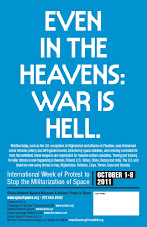
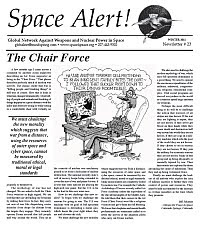

![[Solidarity from Japan for the Jeju] 253 individuals and 16 groups/organizations](http://2.bp.blogspot.com/_gnM5QlRx-4c/TR_YeNVE1yI/AAAAAAAAHWQ/ARyf6oQN0S0/S227/jeju_12_10j.jpg)
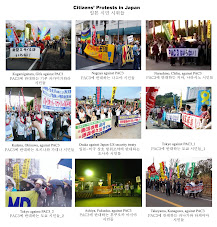
![[Translation] Korean organizations' statement: Immediately cancel the joint ROK-US drill Nov 26](http://2.bp.blogspot.com/_gnM5QlRx-4c/TPOE8VKXHFI/AAAAAAAAGlM/8lryt-8sFjc/S227/1.jpg)
![HOT! [Hankyoreh Hani TV] Beneath the Surface: the investigation into the sinking of the Cheonan](http://4.bp.blogspot.com/_gnM5QlRx-4c/TOI83qht8aI/AAAAAAAAGXU/22SW6Q5ntV8/S227/HaniTV%2BCheonan.gif)

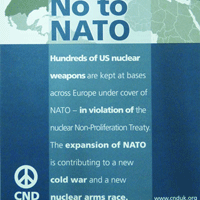

![[Translation]Statement against illegal inspection and unjust lay-off by the Kunsan USAFK!(Nov_2010)](http://4.bp.blogspot.com/_gnM5QlRx-4c/TOPLsVkZMqI/AAAAAAAAGZs/3YnnckIyAaY/S227/gunsan%2Bprotest.gif)
![[Translation] Korean organizations' statement against dispatching special force to the UAE on Nov.](http://4.bp.blogspot.com/_gnM5QlRx-4c/TOP95zHXlCI/AAAAAAAAGak/E0Ug1XtUFfM/S227/antiwarpeace.jpg)
![[Translation] Stop, Joining MD!: South Korean activists' statement and writing on Oct. 25, 2010](http://3.bp.blogspot.com/_gnM5QlRx-4c/TOP7Es4_2sI/AAAAAAAAGac/eWVMPD-U4p0/S227/StopMD.jpg)
![[In Update] People First, NO G-20 (Nov. 6 to 12, Korea)](http://2.bp.blogspot.com/_gnM5QlRx-4c/TJd53XBzHlI/AAAAAAAAFQo/ldO9JPE3eqo/S227/left21_G20.jpg)
![[International Petition] Stop US helipad plan in Okinawa to save great nature](http://4.bp.blogspot.com/_gnM5QlRx-4c/TKC2AHRNzBI/AAAAAAAAFUo/yGWXODTw_uM/S227/yanbaru_w.jpg)

![[Global Network] against the first launch of Quasi-Zenith Satellite, Japan, on Sept. 11, 2010](http://4.bp.blogspot.com/_gnM5QlRx-4c/TIowa1boy4I/AAAAAAAAFDI/82rAi98uq-c/S227/Qzss-45-0_09.jpg)

![[In update] Some collections on the Koreans’ protests against the sanction & war on Iran](http://4.bp.blogspot.com/_gnM5QlRx-4c/TJMvke6t8zI/AAAAAAAAFO4/tamQ8LUnOOA/S227/No+Sanction+on+Iran.jpg)
![[Three International Petitions] to End the Korean war and peace treaty(or peace resolution)](http://1.bp.blogspot.com/_gnM5QlRx-4c/THef7bzWxYI/AAAAAAAAE44/wwdzSDfYhdw/S227/border.jpg)
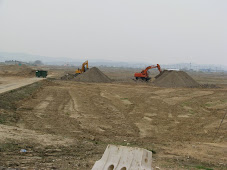


![[Collection of Documents] No Base Learning and Solidarity Program_Korea(June 14 to 20, 2010)](http://1.bp.blogspot.com/_gnM5QlRx-4c/TCTvVuN8NeI/AAAAAAAAEek/8vBJVaHdk10/S227/No-Base-banner.jpg)
![Site Fwd:[John Hines] A U.S. Debate coach’s research trip on the Issues of Korea](http://3.bp.blogspot.com/_gnM5QlRx-4c/TINCO36mzzI/AAAAAAAAE_w/Rds12NcBOXM/S227/Jeju-Peace-Tour.jpg)


![[News Update] Struggle Against the Jeju Naval Base since Jan. 18, 2010](http://1.bp.blogspot.com/_gnM5QlRx-4c/S1vvWaP25uI/AAAAAAAACkg/QvpW1tgOlKM/S226/scrum1.jpg)


![[Urgent] Please spread the Letter!: There was no Explosion! There was no Torpedo! (May 26, 2010)](http://4.bp.blogspot.com/_gnM5QlRx-4c/S_9JmsKEU7I/AAAAAAAAEP8/sAWjSPqxzUI/S227/grounded.jpg)
![Text Fwd: [Stephen Gowans]The sinking of the Cheonan: Another Gulf of Tonkin incident](http://1.bp.blogspot.com/_gnM5QlRx-4c/TAL_FtYKQ-I/AAAAAAAAERE/NEEMijiEcRM/S227/lee-myung-bak.jpg)
![[Japan Focus]Politics in Command: The "International" Investigation into the Sinking of the Cheonan](http://1.bp.blogspot.com/_gnM5QlRx-4c/TBMJ2syJzyI/AAAAAAAAEZU/uTYZccU5vyk/S227/wen_jiabao_and_lee_myungbak.png)
![[Japan Focus] Who Sank the SK Warship Cheonan? A New Stage in the US-Korean War and US-China](http://2.bp.blogspot.com/_gnM5QlRx-4c/S_iQ2vE5ZpI/AAAAAAAAEOU/Oo1SPcAe8FE/S227/buoy_map.gif)
![[Updated on 12/13/10] [Translation Project] Overseas Proofs on the Damages by the Military Bases](http://4.bp.blogspot.com/_gnM5QlRx-4c/S-qSj59gPLI/AAAAAAAAEGM/mwjlFtPE-jo/S227/missile.jpg)
![[International Petition] Close the Bases in Okinawa](http://3.bp.blogspot.com/_gnM5QlRx-4c/S8-z3DYNwNI/AAAAAAAADo4/OswTSchK09M/S227/2.jpg)

![[In Update]Blog Collection: No Korean Troops in Afghanistan](http://4.bp.blogspot.com/_gnM5QlRx-4c/SwnlLD9IewI/AAAAAAAAB9E/oUPssnpNidA/S226/No-Troops-to--Afghanistan.jpg)
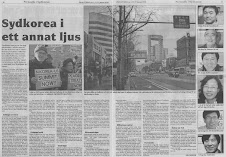

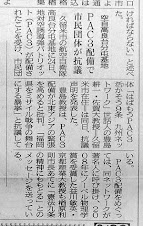

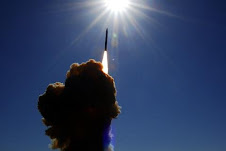






No comments:
Post a Comment